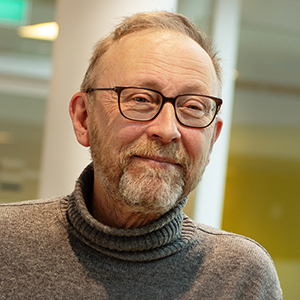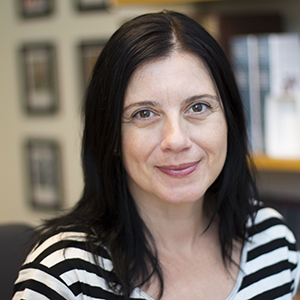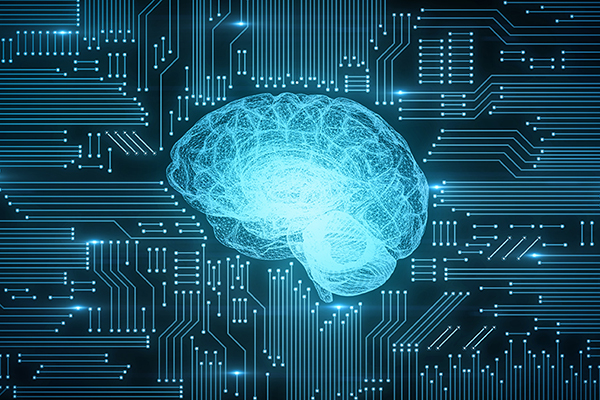Uppsala University was the first Swedish university to issue a warning to a student for using ChatGPT in an examination. It is probable that more students will use AI to assist them with take-home examinations and written assignments in future.
 “It is by no means certain that the total amount of cheating will increase. What might happen is that cheating with AI will replace other types of cheating, such as copying from various sources,” says Mats Cullhed, an educational developer at Uppsala University who has prepared a page of tips and advice to help teachers at the University to get to grips with AI and examinations.
“It is by no means certain that the total amount of cheating will increase. What might happen is that cheating with AI will replace other types of cheating, such as copying from various sources,” says Mats Cullhed, an educational developer at Uppsala University who has prepared a page of tips and advice to help teachers at the University to get to grips with AI and examinations.
As cheating using ChatGPT and similar tools is so difficult to detect, the support document is primarily intended as an aid to prevention. According to Cullhed, this is a matter of both designing examinations and lectures in a way that makes it difficult to cheat and conveying an academic mindset that emphasises the importance of not taking shortcuts.
“Writing a text oneself, choosing the wording that makes it mine, that’s an incredibly important part of learning and one that falls by the wayside when one uses AI. If teachers can cultivate an academic culture from day one, and keep it alive throughout the study period, students will be less inclined to cheat,” says Cullhed.
Making it difficult for students to cheat
Sonja Bjelobaba is an associate professor and a member of the reference group involved in developing the support document. She has a wealth of experience of preparing examinations that are sufficiently complex to make cheating difficult. These examinations are intended to be learning elements and have several steps. Among other things, students are asked to produce films, create their own grammar exercises, discuss various issues and oppose one another both orally and in writing.
 “This is a formative assessment focused on the process rather than simply the result,” explains Bjelobaba, a senior lecturer in Serbian, Croatian and Bosnian at the Department of Modern Languages and a researcher at the Centre for Research Ethics & Bioethics.
“This is a formative assessment focused on the process rather than simply the result,” explains Bjelobaba, a senior lecturer in Serbian, Croatian and Bosnian at the Department of Modern Languages and a researcher at the Centre for Research Ethics & Bioethics.
When it comes to written assignments, she is careful to link them to something that has happened on the course, to her students’ own experiences or to texts that are not available online. This makes it difficult for students to use AI as an aid.
“As a teacher, it’s also much more enjoyable to read that type of answer rather than something that I could just as easily have come across on Wikipedia,” says Bjelobaba.
Cullhed is also a proponent of examining students in multiple ways. For example, by questioning a student in person about an assignment they have submitted, the teacher can assess whether the text in question actually formulates the student’s own thoughts.
How can teachers find the time
According to Cullhed, it is difficult to prepare a strategy that suits all courses. Multi-stage examination is easier in smaller groups. It is likely that AI will present more challenges on courses with many students.
“Perhaps it will be possible to see if resources can be redistributed so that feedback is given a more prominent role at the heart of teaching and examination,” says Cullhed.
“Every programme or subject must seek a reasonable solution. It is important that this is done collegially, rather than every teacher coming to their own conclusions. And that students are given the opportunity to express opinions on examination praxis as it develops.”
The potential to improve examinations and learning
Despite concerns, Cullhed also feels that it is important to focus on how teaching and examinations can be improved and coexist with the new technology.
“It’s a matter of reviewing examination praxis and improving the examinations themselves so that everyone benefits, not of making changes to catch out individual students.”
Bjelobaba sees no reason to be afraid of the new technology. On the contrary, she believes that tools such as ChatGPT will do a great deal of good.
“This can be a good thing for higher education, at least if we can integrate it into teaching and if it means that we have to look at examinations and really think about the best way to examine the intended learning outcomes of the course, and if we use formative assessment as an additional learning element.”
It is often during examinations that students learn and, if we can make these moments into a more integrated part of teaching then students will gain more knowledge.
She is also convinced that ChatGPT can help students and that, in practice, it would be impossible to prohibit them from using it outside the examination hall anyway.
“New York City public schools banned its use completely. That’s like banning the internet – it’s just not possible. Should we ban computers as well, and writing with pen and paper?”
Microsoft has recently integrated a ChatGPT variant with Office 365, which will make it just as easy to use as the synonym function. Instead of working towards a total ban, it needs to be viewed as a technical aid.
“It's a bit like using Google translate. If used correctly, ChatGPT can help you structure your text and ideas and thus develop your writing”, Bjelobaba.
As students will be using similar tools later in their working life, she feels that it is important that they learn how to ask good questions to AIs and to interpret their answers now. And she believes that this must be done in parallel with students practising their writing skills. As a teacher, it is important to discuss with students when it is and is not appropriate to use the technology.
“I usually say that, in many cases, technical aids are fantastic. But sometimes there is great value in doing things slowly, such as running instead of taking the car. The same applies to AI, it may be faster but you won’t build up your knowledge and writing skill.”
